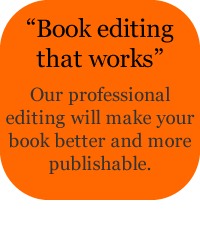If you use the technique I outline in this article you will be able to produce better novels with defined structure and natural tension. The technique will allow you to avoid writing stories that fail to engage your readers.
I am sure you have all, at some point, watched a cop drama, serial killer film or even read some crime fiction. This genre normally contains a pretty predictable story line, and though it may vary from book to book, film to film and cop show to cop show, in essence the narrative arc is normally the same. It goes something like this: body is found, detective investigates, killer is located, a chase occurs and killer is captured/killed.
This is a classic narrative arc with the set up being the discovery of the body, the confrontation being the investigation and the resolution being the capture of the killer. The arc has a natural flow and a natural tension that keeps the reader reading. However, it is impossible to build this tension without establishing what is known as an inciting incident, which occurs in the first act.
The inciting incident is an event that forces the protagonist to react.
In the cop show example the inciting incident is the discovery of the body. The protagonist, probably a cop, has no choice but to react to the killing and set out to find the killer.
One key point to remember here is that the inciting incident is playing on one of our most basic instincts and that is to resolve mystery. It is human nature to seek out the solutions to problems. Just imagine how annoying it would be for someone to tell you the setup to a joke and then refuse to tell you the punch line. No matter how silly the joke you just need the resolution. So in the case of a novel, the inciting incident sets up a situation in which the reader is almost subconsciously compelled to find out the resolution to the inciting incident. If you start watching a cop show, you need to watch to the end to find out who did it…
Creating An Inciting Incident
No matter what genre of story you are writing your inciting incident must appear fully formed and have an immediate impact on the protagonist. If your inciting incident is vague, passive and almost without note, it will fail to build a compelling story and leave your reader confused as to why the protagonist is reacting.
It is essential that when the inciting incident arrives the protagonist has no option but to react. The protagonist may choose to do nothing, but that is still a reaction.
The best way to think about the inciting incident is that it destroys the status quo of the protagonist’s life and they are then required to react in an attempt to return to the status quo. The inciting incident may have either positive or negative impact on the protagonist’s life.
Example: Imagine a story where the protagonist learns that a long lost, but wealthy, relative has died leaving them to inherit a fortune. The only catch is that the will states that they must spend a night in a haunted house… Here the inciting incident (inheritance) is positive but forces the protagonist to make a choice. They can do nothing or sleep in the haunted house, but they must do something. Either way the story is set up for a resolution – will the protagonist get the inheritance?
Second example: A husband wakes one morning to find his wife lying dead next to him. The husband has the blood soaked knife still clutched in his hands… This time the inciting incident is negative and leaves the protagonist with a number of choices (phone the police, runaway, bury the body in the garden and do nothing) but sets up the story for a resolution (who killed the wife?)
Positioning of the Inciting Incident
The placing of the inciting incident within your story is essential. It must occur in the first act and the closer to the start of the novel the better. There are many books where the inciting incident occurs in the opening pages, or even the opening line. What matters is that you hook the reader as soon as possible. Once they have read the inciting incident you have created a tension and the reader will be compelled to read on, if only to discover the resolution.
One difficulty writer’s face is when the inciting incident requires a set up. For example, in the novel 1984 by George Orwell. The inciting incident comes when Winston Smith is handed a note from an unknown girl (Julia), which simply states, ‘I love you’. However, the incident doesn’t occur until Chapter 9. The reason for this is that Orwell needs to set up the world before the inciting incident can gain its power and leave Winston in a dilemma of how to react. His world is altered forever and he is left with a choice.
When setting up an inciting incident it is essential that you consider carefully just how much information the reader requires for the inciting incident to make sense. The key here is that you are setting up an understanding of the inciting incident NOT an understanding of the world.
For example: Let’s say you have written a novel set 200 years in the future. It is about a cop trying to catch a serial killer. Though the world may need much ‘setting up’ the inciting incident requires very little. The reader only needs to know the protagonist is a cop and there is a killer on the loose and they will understand the inciting incident. You then have the rest of the novel to ‘set up’ the world. In this case you could probably introduce the inciting incident in the first chapter.
The Best Inciting Incidents
The final point to consider is that the best inciting incidents will force the protagonist to react on two levels. The first level is a conscious level that is clear to the reader. Look at the examples we have used; the protagonist set to inherit the money, the husband with a murdered wife and the cop chasing a serial killer, in each of these cases the reasons for their reaction are clear and conscious.
The best inciting incidents operate on two levels: consciously and subconsciously. In these cases not only is the protagonist acting with a clear and conscious motive (e.g. the cop’s job is to catch the killer) but also a deeper and unseen subconscious drive (the serial killer might be killing young girls and this presents a moral outrage to the cop.)
Example: In 1984 Winston Smith reacts to the ‘I love you’ note on a clear conscious level, that of human love. But the protagonist is struggling with thoughts and feelings against the regime known as Big brother. This is why Orwell sets up eight chapters prior to the inciting incident. Only by understanding Winston’s feelings to Big Brother can the reader understand that by seeking out Julia after she hands him the note, his actions are driven on both consciously and subconsciously.
Key Points
- The inciting incident must arrive fully formed.
- The inciting incident must force the protagonist to react.
- The inciting incident must require (and receive) a resolution.
- It must occur as soon as possible.
- Don’t confuse set up with setting.
- The best inciting incidents work consciously and subconsciously.
Next Action
If you do nothing else I would urge you to start seeing films, books and TV shows in the context of the three act structure. But most importantly I would suggest you practice identifying both the inciting incident and resolution to the story.
If you apply the techniques I have shown in this post, then you will be able to use the inciting incident to write compelling novels that will engage readers from the first page.



